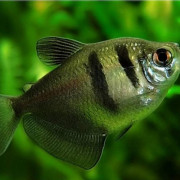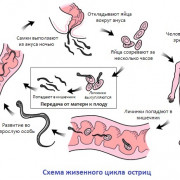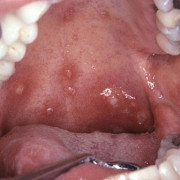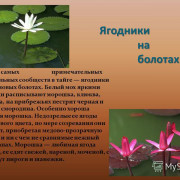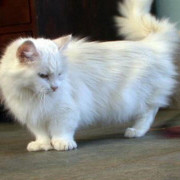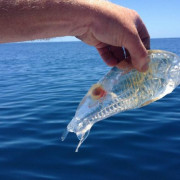Пахиринозавр динозавр на белом фоне Premium Фотографии
Содержание:
Примечания
- . Очерки по эволюции рептилий. Архозавры и зверообразные. — М. : ГЕОС, 2009. — С. 166. — 377 с. : ил. — (Труды ПИН РАН ; т. 291). — 600 экз. — ISBN 978-5-89118-461-9.
- ↑
- Fiorillo A. R. and Tykoski R. S. 2012. A new Maastrichtian species of the centrosaurine ceratopsid Pachyrhinosaurus from the North Slope of Alaska. Acta Palaeontologica Polonica 57(3): 561—573.
- Currie P. J., Langston W., and Tanke D. H. 2008. A new species of Pachyrhinosaurus (Dinosauria, Ceratopsidae) from the Upper Cretaceous of Alberta, Canada. In P. J. Currie, W. Langston Jr., D. H. Tanke (eds.), in A New Horned Dinosaur from an Upper Cretaceous Bone Bed in Alberta. NRC Research Press, Ottawa 1—108.
- Fiorillo A. R. and Tykoski R. S. T. (in press). A new species of the centrosaurine ceratopsid Pachyrhinosaurus from the North Slope (Prince Creek Formation: Maastrichtian) of Alaska. Acta Palaeontologica Polonica, available online 26 Aug 2011.
Description
Restoration of two P. perotorum
The largest Pachyrhinosaurus species were 8 metres (26 ft) long. It weighed about four tonnes. They were herbivorous and possessed strong cheek teeth to help them chew tough, fibrous plants.
Instead of horns, their skulls bore massive, flattened bosses; a large boss over the nose and a smaller one over the eyes. A prominent pair of horns grew from the frill and extended upwards. The skull also bore several smaller horns or ornaments that varied between individuals and between species. In P. canadensis and P. perotorum, the bosses over the nose and eyes nearly grew together, and were separated only by a narrow groove. In P. lakustai, the two bosses were separated by a wide gap. In P. canadensis and P. lakustai, the frill bore two additional small, curved, backward-pointed horns. These were not present in P. perotorum, and in fact some specimens of P. lakustai also lack them, which may indicate that the presence of these horns varied by age or sex.
Various ornaments of the nasal boss have also been used to distinguish between different species of Pachyrhinosaurus. Both P. lakustai and P. perotorum bore a jagged, comb-like extension at the tip of the boss which was missing in P. canadensis. P. perotorum was unique in having a narrow dome in the middle of the back portion of the nasal boss, and P. lakustai had a pommel-like structure projecting from the front of the boss (the boss of P. canadensis was mainly flat on top and rounded). P. perotorum bore two unique, flattened horns which projected forward and down from the top edge of the frill, and P. lakustai bore another comb-like horn arising from the middle of the frill behind the eyes.
References
- ^
- Sternberg, C. M. (1950). «Pachyrhinosaurus canadensis, representing a new family of the Ceratopsia, from southern Alberta». National Museum of Canada Bulletin. 118: 109–120.
- ^ Currie, P.J., Langston, W., and Tanke, D.H. (2008). «A new species of Pachyrhinosaurus (Dinosauria, Ceratopsidae) from the Upper Cretaceous of Alberta, Canada.» pp. 1-108. In: Currie, P.J., Langston, W., and Tanke, D.H. 2008. . NRC Research Press, Ottawa, Ontario, Canada. 144 pp. ISBN 978-0-660-19819-4
- E. B. Koppelhus. 2008. Palynology of the Wapiti Formation in the northwestern part of Alberta with special emphasis on a new Pachyrhinosaur bonebed. International Dinosaur Symposium in Fukui 2008: Recent Progress of the Study on Asian Dinosaurs and Paleoenvironments. Fukui Prefectural Dinosaur Museum, Fukui 65-66.
- ^
- Rosenberg, Gary D.; Wolberg, Donald L. (1994). Dino fest : proceedings of a conference for the general public, March 24, 1994. Geology Dept., Indiana University-Purdue University. OCLC .
- ^ Weishampel, D.B.; Dodson, P. & Osmolska, H. (2004). The Dinosauria (Second ed.). Berkeley: University of California Press. pp. 577–584. ISBN 0-520-24209-2.
- Kososki, B., Reiser, H., Cavitt, C., Detterman, R (1978) A Gravity study of the northern part of the Arctic National Wildlife Range, Alaska. (Geological Survey Bulletin 1440) Bibliography: p. 20-21
- J. Haffty, R. G. Schmidt, L. B. Riley, W. D. Goss. Rocks and Mineral Resources of the Wolf Creek Area, Lewis and Clark and Cascade Counties, Montana: A Descriptive Report on an Area in the Disturbed Belt Along the Eastern Front of the Northern Rocky Mountains in Western Montana, Issues 1441-1446
- Dodson, Peter (1996). The Horned Dinosaurs: A Natural History. Princeton: Princeton University Press. pp. 14–15. ISBN 0-691-05900-4.
- ^ Lehman, T. M., 2001, Late Cretaceous dinosaur provinciality: In: Mesozoic Vertebrate Life, edited by Tanke, D. H., and Carpenter, K., Indiana University Press, pp. 310-328.
- Weishampel, David B.; Dodson, Peter; and Osmólska, Halszka (eds.): The Dinosauria, 2nd, Berkeley: University of California Press. (2004) 861 pp. ISBN 0-520-24209-2.
- Dinosaurs portal
- Cretaceous portal
- Canada portal
- Alaska portal
Discovery and species
P. canadensis skull cast, Geological Museum, Copenhagen
Pachyrhinosaurus canadensis, was described in 1950 by Charles Mortram Sternberg based on the holotype incomplete skull NMC 8867, and the paratype incomplete skull NMC 8866, which included the anterior part of the skull but was lacking the right lower mandible, and the «beak». These skulls were collected in 1945 and 1946 from the sandy clay of the Horseshoe Canyon Formation in Alberta, Canada. In the years to come, additional material would be recovered at the Scabby Butte locality of the St. Mary River Formation near Lethbridge, Alberta, from terrestrial sediments considered to be between 74 and 66 million years old. These were among the first dinosaur sites found in the province, in the 1880s. The significance of these discoveries was not understood until shortly after World War II when preliminary excavations were conducted.
Another Pachyrhinosaurus skull was taken out of the Scabby Butte locality in 1955, and then in 1957 Wann Langston Jr. and a small crew excavated additional pachyrhinosaur remains. The University of Calgary has plans to reopen this important site some day as a field school for university-level paleontology students.
Several specimens, NMC 21863, NMC 21864, NMC 10669 assigned in 1975 by W. Langston, Jr. to Pachyrhinosaurus were also recovered at the Scabby Butte locality.
P. lakustai skull
Another Pachyrhinosaurus bonebed, on the Wapiti River south of Beaverlodge in northwestern Alberta, was worked briefly by staff of the Royal Tyrrell Museum in the late 1980s but is now worked annually for a couple weeks each summer (since 2006) by the University of Alberta. Material from this site appears referable to Pachyrhinosaurus canadensis. In 1974, Grande Prairie, Alberta science teacher Al Lakusta found a large bonebed along Pipestone Creek in Alberta. When the area was finally excavated between 1986 and 1989 by staff and volunteers of the Royal Tyrrell Museum of Palaeontology, paleontologists discovered an amazingly large and dense selection of bones—up to 100 per square meter, with a total of 3500 bones and 14 skulls. This was apparently the site of a mass mortality, perhaps a failed attempt to cross a river during a flood. Found amongst the fossils were the skeletons of four distinct age groups ranging from juveniles to full grown dinosaurs, indicating that the Pachyrhinosaurus cared for their young. The adult skulls had both convex and concave bosses as well as unicorn-style horns on the parietal bone just behind their eyes. The concave boss types might be related to erosion only and not reflect male/female differences.
In 2008, a detailed monograph describing the skull of the Pipestone Creek pachyrhinosaur, and penned by Philip J. Currie, Wann Langston, Jr., and Darren Tanke, classified the specimen as a second species of Pachyrhinosaurus, named P. lakustai after its discoverer.
Skull differences between different growth stages of P. perotorum
In 2013, Fiorillo et al. described a new specimen, an incomplete nasal bone attributable to Pachyrhinosaurus perotorum which was collected from the Kikak-Tegoseak Quarry on the Colville River in Alaska. Fiorillo et al. named this unique northern Alaskan species after the Texas oil billionaire and benefactor, Ross Perot. This bone, designated DMNH 21460 belongs to an immature individual. This discovery expands the known age profile of this dinosaur genus from this particular site. The specimen has nasal ornamentation that is dorsally enlarged, representing an intermediate stage of growth. Of note, the authors pointed out that the posterior part of the nasal shows evidence for «a degree of integument complexity not previously recognized in other species» of Pachyrhinosaurus. It was determined that the dorsal surface of the nasal boss bore a thick, cornified pad and sheath.
Paleobiology
Growth rates
During the first few years of development, P. perotorum show extremely rapid growth. When the animals were one year old, they had already reached 28% of their adult body size. By age two, they were almost half the size of a mature adult. However, the rate of growth slows considerably after that, and maximum size is not fully attained until about age twenty. The development of characteristics useful in sexual selection, including competition between males, such as pronounced nasal bosses, occurred at approximately nine years of age. This presumably corresponds to the age of sexual maturity.
Unlike other Pachyrhinosaurus species, P. perotorum shows highly conspicuous growth banding in the bones, indicating retarded growth during the winter. This is perhaps not surprising, considering that P. perotorum experienced much harsher winters than southerly species within the genus.
P. lakustai does not show growth banding early in ontogeny in the specimens that have been examined. However, growth bands are weakly expressed later in ontogeny. This probably indicates rapid growth in youth, followed by gradually decreasing growth rates as the animal neared adulthood. The growth curve of the animal would therefore be somewhat asymptotic, unlike the linear growth found in many ectothermic animals.
The development of characteristics useful in sexual selection, including competition between males, such as pronounced nasal bosses, occurred when the dinosaur was roughly 73% the size of a full-grown adult. The age of sexual maturity is unknown. Due to the lack of conspicuous growth banding, more detailed analyses of P. lakustai growth rates cannot be performed.
Систематика
Pachyrhinosaurus принадлежит к подсемейству (Centrosaurinae), хотя отдельные систематики выделяют роды Pachyrhinosaurus, , и в трибу Pachyrhinosaurini.
Виды
Pachyrhinosaurus perotorum — вид описан в исследователями Энтони Р. Фьорилло и Рональдом С. Тикоски из Музея природы и науки города . Ископаемые остатки найдены в формации Prince Creek на , и датируются концом мелового периода (около 70—69 миллионов лет). В длину достигал около 5 метров.
Вид был описан на основе двух фрагментов parietals (которая у являются костью, формирующей воротник) и частичного черепа. Pachyrhinosaurus perotorum является бореальным (т. е. жившим в северных широтах) динозавром. Во время верхнего мела Аляска была расположена в таких же или более высоких широтах, чем её текущее географическое положение, а это означает, что её обитатели были приспособлены к условиям, где 6 месяцев в году бывают долгие зимние ночи с низкой температурой. Верхнемеловые отложения формации Prince Creek Аляски в настоящее время являются самыми богатыми находками полярных динозавров в обоих полушариях. В карьере Kikak-Tegoseak, где были найдены останки Pachyrhinosaurus perotorum, также обнаружены кости и других динозавров: хищников и , тираннозаврид , гадрозаврид и пахицефалозаврид .
Pachyrhinosaurus perotorum — самый молодой (нижний ) из трёх видов. Он характеризуется уникальной передней парой теменных рогов, расположенных на верхнем крае теменных полостей (большие отверстия в воротнике), и узкий купол в задней части носового утолщения.
Pachyrhinosaurus canadensis является достаточно большим, 6-метровым цератопсом. Описан в . Известен из отложений на реке Сент-Мэри (верхний — нижний маастрихт) и формации Horseshoe Canyon (нижний маастрихт) провинции ().
Pachyrhinosaurus lakustai — вид, описанный в из формации Wapiti (верхний кампан) провинции Альберта, отличается от Pachyrhinosaurus canadensis по хорошо разделённым носовыми и надбровными костными уплощениями и наличием рога на теменной кости, как раз за глазами. В длину достигал не более 5 метров.
Образец TMP 2002.76.1 из формации Dinosaur Park провинции Альберта, находящийся в Королевском музее Тиррела, показывает сходство с обоими Pachyrhinosaurus и , может представлять собой четвёртый вид в этом роде.

